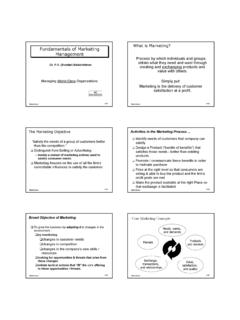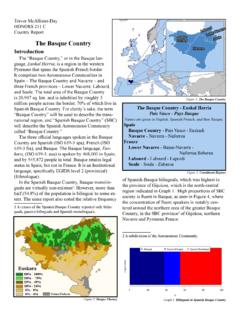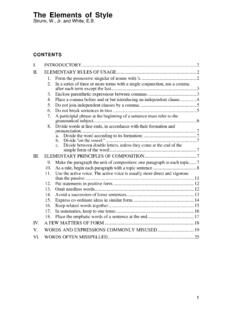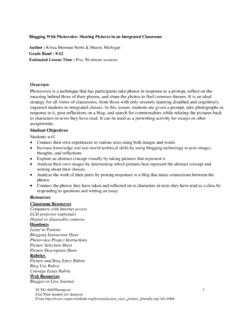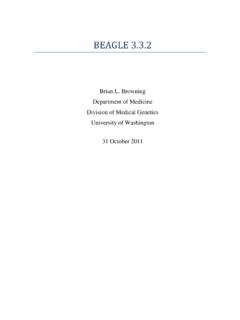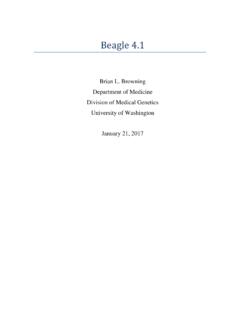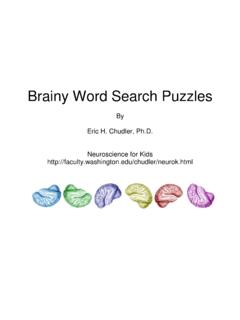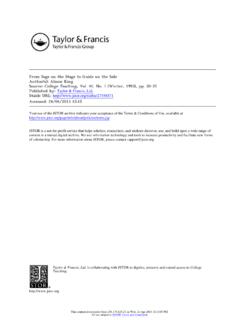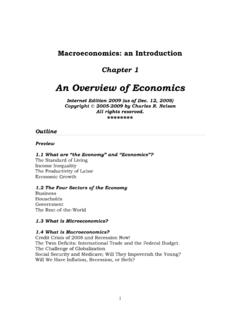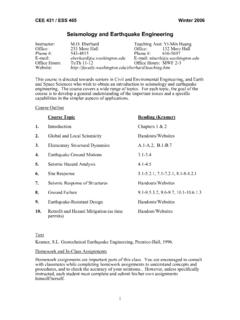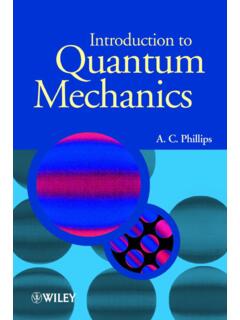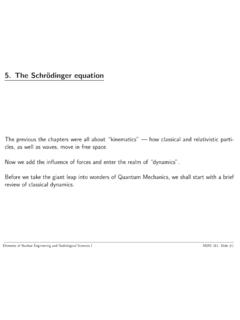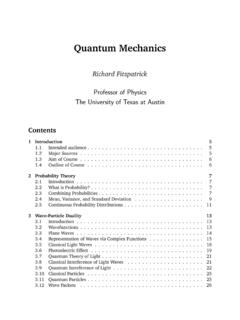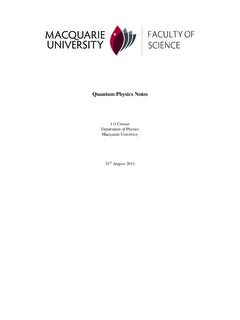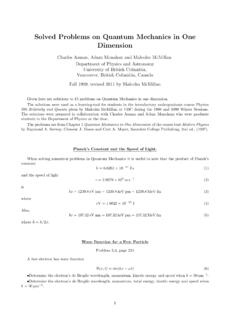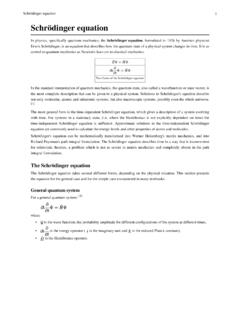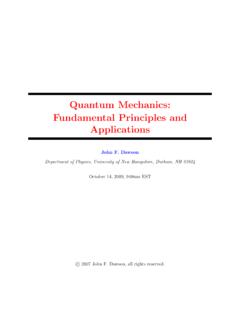Transcription of Classical Mechanics (Goldstein book)
1 Classical MechanicsFront cover of the third editionAuthorHerbert GoldsteinCountryUnited States ofAmericaLanguageEnglishSubjectClassical mechanicsGenreNon-fictionPublisherAddiso n-WesleyPublicationdate1951, 1980, 2002 Media typePrintPages638 ISBN978-0-201-65702-9 Classical Mechanics (Goldstein book) Classical Mechanics is a textbook about that subject written byHerbert Goldstein, a professor at Columbia University. Intendedfor advanced undergraduate and beginning graduate students, ithas been one of the standard references in its subject around theworld since its first publication in 1951.[1][2]OverviewTable of Contents (3rd Edition)EditionsAssessmentSee alsoExternal linksReferencesIn the second edition, Goldstein corrected all the errors that hadbeen pointed out, added a new chapter on perturbation theory, anew section on Bertrand's theorem, and another on Noether'stheorem.
2 Other arguments and proofs were simplified andsupplemented.[3]Before the death of its primary author in 2005, a new (third)edition of the book was released, with the collaboration ofCharles P. Poole and John L. Safko from the University of SouthCarolina.[4] In the third edition, the book discusses at lengthvarious mathematically sophisticated reformations of Newtonian Mechanics , namely analyticalmechanics, as applied to particles, rigid bodies and continua. In addition, it covers in some detailclassical electromagnetism, special relativity, and field theory, both Classical and relativistic .
3 There is anappendix on group theory. New to the third edition include a chapter on nonlinear dynamics and chaos, asection on the exact solutions to the three-body problem obtained by Euler and Lagrange, a discussion ofthe damped driven pendulum that explains the Josephson junctions. This is counterbalanced by thereduction of several existing chapters motivated by the desire to prevent this edition from exceeding theprevious one in length. For example, the discussions of Hermitian and unitary matrices were omittedbecause they are more relevant to quantum Mechanics rather than Classical Mechanics , while those ofRouth's procedure and time-independent perturbation theory were reduced.
4 [5]ContentsOverview1. Goldstein, Herbert (1951). Classical Mechanics (1st ed.). B000OL8 LOM ( ).2. Goldstein, Herbert (1980). Classical Mechanics (2nd ed.). Addison-Wesley. ISBN Goldstein, Herbert; Poole, C. P.; Safko, J. L. (2001). Classical Mechanics (3rd ed.).Addison-Wesley. ISBN Quimby of Columbia University noted that the first half of the first edition of the book is dedicatedto the development of Lagrangian Mechanics with the treatment of velocity-dependent potentials, whichare important in electromagnetism, and the use of the Cayley-Klein parameters and matrix algebra forrigid-body dynamics.
5 This is followed by a comprehensive and clear discussion of Hamiltonianmechanics. End-of-chapter references improve the value of the book. Quimby pointed out that althoughthis book is suitable for students preparing for quantum Mechanics , it is not helpful for those interested inanalytical Mechanics because its treatment omits too much. Quimby praised the quality of printing andbinding which make the book attractive.[6]In the Journal of the Franklin Institute, Rupen Eskergian noted that the first edition of ClassicalMechanics offers a mature take on the subject using vector and tensor notations and with a welcomeemphasis on variational methods.
6 This book begins with a review of elementary concepts, the introducesPrefaceChapter 1: Survey of Elementary PrinciplesChapter 2: Variational Principles and Lagrange's EquationsChapter 3: The Central Force ProblemChapter 4: The Kinematics of Rigid Body MotionChapter 5: The Rigid Body Equations of MotionChapter 6: OscillationsChapter 7: The Classical Mechanics of the Special Theory of RelativityChapter 8: The Hamilton Equations of MotionChapter 9: Canonical TransformationsChapter 10: Hamilton Jacobi Theory and Action-Angle CoordinatesChapter 11: Classical ChaosChapter 12: Canonical Perturbation TheoryChapter 13: Introduction to the Lagrangian and Hamiltonian Formulations for ContinuousSystems and FieldsAppendix A: Euler Angles in Alternate Conventions and Cayley Klein ParametersAppendix B: Groups and AlgebrasAppendix C: Solutions to Select ExercisesSelect BibliographyAuthor IndexSubject IndexTable of Contents (3rd Edition)EditionsAssessmentthe principle of virtual work, constraints, generalized coordinates, and Lagrangian Mechanics .
7 Scatteringis treated in the same chapter as central forces and the two-body problem. Unlike most other books onmechanics, this one elaborates upon the virial theorem. The discussion of canonical and contacttransformations, the Hamilton-Jacobi theory, and action-angle coordinates is followed by a presentationof geometric optics and wave Mechanics . Eskergian believed this book serves as a bridge to modernphysics.[7]Writing for The Mathematical Gazette on the first edition, L. Rosenhead congratulated Goldstein for alucid account of Classical Mechanics leading to modern theoretical physics, which he believed wouldstand the test of time alongside acknowledged classics such as Whittaker's Analytical Dynamics andArnold Sommerfeld's Lectures on Theoretical Physics.
8 This book is self-contained and is suitable forstudents who have completed courses in mathematics and physics of the first two years of references with comments and some example problems enhance the book. Rosenheadalso liked the diagrams, index, and printing.[8]Concerning the second printing of the first edition, Vic Twerskyof the Mathematical Research Group at New York Universityconsidered the book to be of pedagogical merit because itexplains things in a clear and simple manner, and its humor is notforced. Published in the 1950s, this book replaced the outdatedand fragmented treatises and supplements typically assigned tobeginning graduate students as a modern text on classicalmechanics with exercises and examples demonstrating the linkbetween this and other branches of physics, including acoustics,electrodynamics, thermodynamics, geometric optics, andquantum Mechanics .
9 It also has a chapter on the Mechanics offields and continua. At the end of each chapter, there is a list ofreferences with the author's candid reviews of each. Twersky saidthat Goldstein's Classical Mechanics is more suitable forphysicists compared to the much older treatise AnalyticalDynamics by Whittaker, which he deemed more appropriatefor mathematicians.[1]E. W. Banhagel, an instructor from Detroit, Michigan, observedthat despite requiring no more than multivariable and vectorcalculus, the first edition of Classical Mechanics successfully introduces some sophisticated new ideas inphysics to students.
10 Mathematical tools are introduced as needed. He believed that the annotatedreferences at the end of each chapter are of great value.[9]Stephen R. Addison from the University of Central Arkansas commented that while the first edition ofClassical Mechanics was essentially a treatise with exercises, the third has become less scholarly andmore of a textbook. This book is most useful for students who are interested in learning the necessarymaterial in preparation for quantum Mechanics . The presentation of most materials in the third editionremain unchanged compared to that of the second, though many of the old references and footnotes wereremoved.
